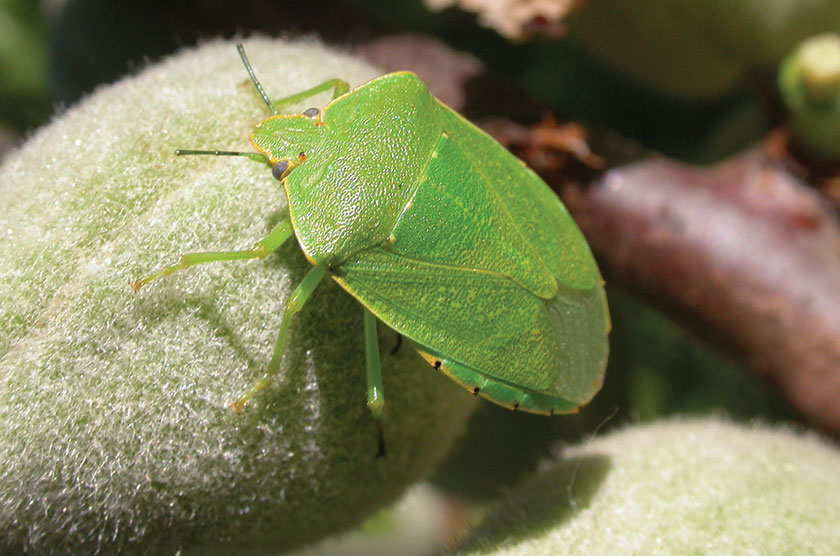
NOW means now when it comes to orchard sanitation aimed at minimizing navel orangeworm disruption.
Speaking at an Integrated Pest Management session at the Almond Conference, David Haviland, entomology farm advisor in Kern County, warned that if orchards aren’t cleaned up post-harvest, they may become infected pre-next-harvest. “NOW is really the arch-nemesis of almond growers and there is no silver bullet here,” he said.
“Think about why sanitation is important in this way,” he told Western Farm Press. “By mid-January, you can assume growers have completed their shaking process, but may not have totally completed follow-up poling. Although it’s late in the game, it still has relevance in removing leftover mummies.”
In what he called a “back-of-the-napkin” summary, he explained the importance of removing and destroying any remaining nuts from last year’s crop. “If you’re down to two mummies per tree and 10% of those are infested, you can assume that half of any worms in there are females and each, when they come out, will make 85 eggs,” he said.
“If that’s the case, within an acre, you’ll have 10 females coming out at different times and all will be competing to lay 850 eggs in a completely uncoordinated way as they’re also trying to find mates in the process.
“Each one of these females that normally lays 85 eggs will have to find a nut still in a tree, lay an egg in it, fly around the tree and find another nut, lay another egg,” Haviland said. “Then fly to a different tree, find a nut, lay an egg. If you’re down to two mummies per tree, they literally have to fly to 42 different trees to lay one egg in each leftover nut. Even with only two mummies per tree, you’re creating chaos because any egg you prevent from being laid in May will be one less moth in the orchard at hull split.”
Stink bugs
And while he calls navel orangeworm the Nos. 1, 2, and 3 nemesis of almond growers, he warns that leaf-footed bugs and stink bugs are fighting it out for fourth place.
“It’s pretty straightforward—for many years, stink bugs were controlled by the broad spectrum insecticide program already in use for NOW, but growers have almost exclusively stopped using organophosphates for NOW and during the dormant season, stink bugs are showing up again around March through May when growers have stopped monitoring for bugs thinking they were out of the woods,” he said.
“That’s about the time that leaf-bugs and stink bugs are flying into the nut orchard as neighboring crops get mowed or harvested. Stink bugs have mouth parts that poke through the almond shell to feed on the kernel, causing a necrotic spot on the kernel. And although there is no health concern, a black spot on the kernel causes the nut to be categorized as inedible.
“It’s absolutely becoming a problem again for California almond growers, an unfortunate negative consequence of growers trying to become more green and sustainable.”
His bottom line advice? “When you get to the May through June period, don’t walk away from continual bug monitoring, particularly for stinkbugs that can migrate into your orchard. They’re cryptic and hard to find, often camouflaged in the tops of the trees. Be especially watchful if field crops are being harvested nearby as the bugs will all fly to your orchard for refuge.”
For more news on tree nuts as reported by growers and farm advisors, subscribe to the Tree Nut Farm Press e-newsletter.
About the Author(s)
You May Also Like




